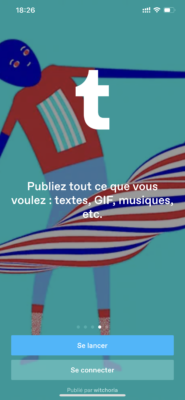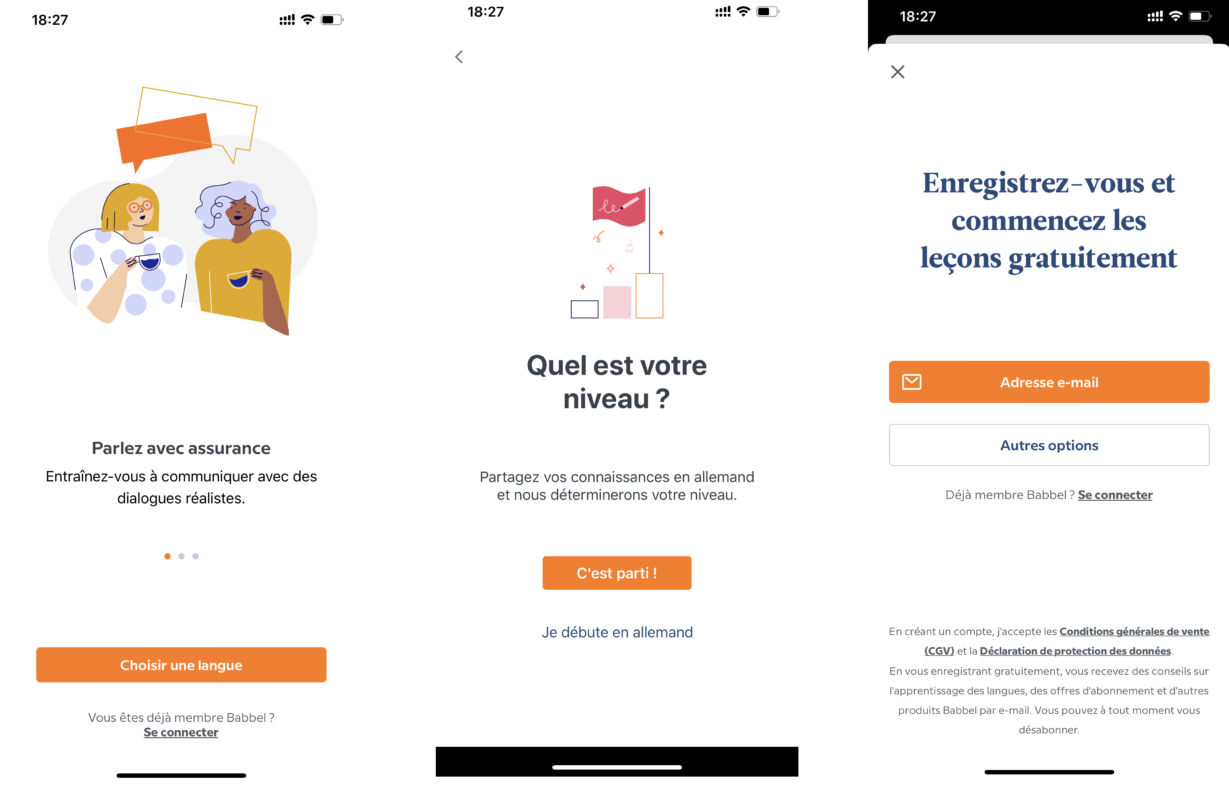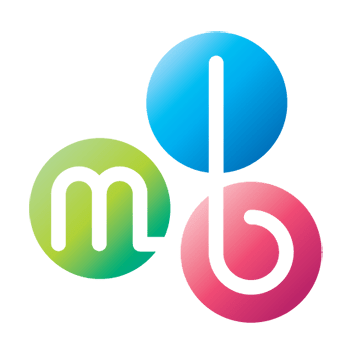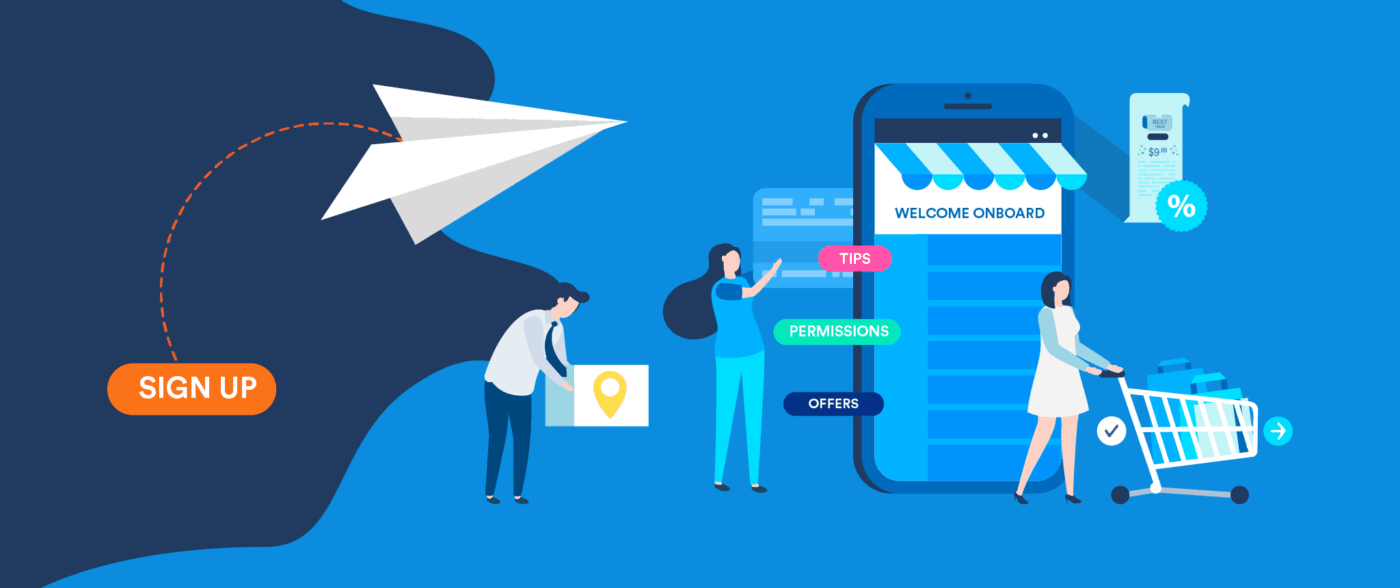Create an efficient onboarding for your app
Mobile onboarding is a crucial step in getting new users to adopt and frequently use your app; that’s why it must be well thought out to fulfill its mission.
Knowing that more than 20% of the people who download an app use it only once. It shows how valuable it is to take care of the onboarding phase to retain new users.
Here are a few techniques to achieve it!
Making the user experience as easy as possible
Onboarding on your mobile app should be simple and efficient. Otherwise new users may not like it and fail to complete the registration process, or even worst, uninstall the app.
It’s better to make your onboarding process benefit-oriented by showing your app’s added value as quickly as possible.
According to a survey conducted by clutch.co among people who have recently downloaded an app, 44% of them say they downloaded it “just for fun.”
The value proposition, or in other words, what your app can offer its users in terms of possibilities, should therefore be made clear from the start!
The message conveyed must be warm, prompt, and straightforward. It must talk to the common sense of the user. So go for an intuitive interface that does just that.
If you choose the slide format, use no more than ten words per slide to capture a user’s attention. Be direct, especially on the home screen: the user won’t spend more than a minute there.
Inform the user about the functionalities

This so-called “function-oriented” approach places more emphasis on the value of the app. Here too, simplicity is the key. It makes sense to highlight a single functionality, the main one of your app.
In the case of Shazam, its key feature is the possibility to recognize a tune. That feature is made easily accessible by using the very distinctive button of the app. The other features of Shazam are presented later, without interfering with the onboarding or the app’s main use.
When navigating after a first positive impression, the user will explore the app’s interface and discover other features. But complexity and confusion from the start will only discourage new users. So keep it simple.
The key to success is to offer a fluid experience. The new user must feel welcome in the app, and every action he or she takes must be acknowledged and rewarded to make him want to use it more.
This is essential to make the user register and share with you data that you will use to offer “tailor-made” content in the future.
Offer personalize contents
App users prefer experiences that are in line with their tastes and favorite subjects. That’s why it’s a good idea to favor an offer that is adapted to your users. To this end, you should collect user data to provide “tailor-made” content and notifications.
Onboarding on your mobile app can also encourage users to customize their own experience. An app that introduces new users to other registered users’ activity invites early adopters to take advantage of the possibilities.
That’s the choice Tumblr made. This app that allows its users to post texts, photos, or other files, shows its value as soon as a new user creates his profile. On the first page, Tumblr shows images already posted before by other users on the interface and what the user will have access to.
Another example, Podebean, an app that offers you podcasts suggestions, ask you a few questions about your interests to customize its recommendations. This method used for customizing content also works. However, Podbean is smart and asks new users very little information for a simple reason, they don’t want to scare them away!
A registration that builds trust

The registration phase is crucial to collect information about your new users and harvest data to help you better target their preferences.
It’s why you shouldn’t avoid this step or delay it for fear of discouraging potential new users. Instead, make the registration quick and straightforward to get around this problem.
Allowing new users to connect through a social network such as Facebook is also recommended. But always give a new user the possibility to register in the “classic” way by using an email address.
To make it easier, don’t ask for too much information from people who want to register: forms that take too long to fill out will discourage people from creating an account. A single screen is more than enough to collect the necessary information to get started.
You can also offer new users the possibility to try your app without registering on the spot. A free trial allows them to get used to the app and increase the chance of them signing up later.
The power of a free trial
By making the onboarding of your mobile application interactive, you considerably increase its attractiveness. Encourage new users to act without waiting, free of charge!
For example, the foreign language learning app Babbel encourages new users to “get started” with a free trial. By making the first lesson free and easily accessible, Babbel manages to turn free users into paid users efficiently because they’ve already convinced them of the app’s usefulness.

Your mobile app features will also be more convincing if you allow your future users to try them for free first. A free trial is more persuasive than promoting the features through ads.
Once the user tried the app and recognize its benefits, they are more likely to register and complete their account profile. To do this, you must, of course, take care of the registration form and adapt it to your target.
For example, you can provide a short tutorial to guide the new user on registering and getting started. A short video is also suitable.
Onboarding is a crucial step in persuading potential new users that your app will be useful to them. It means making their interaction with your app simple and user-friendly. The features of the app should be highlighted and easily accessible, especially the “flagship” feature.
Of course, personalized content will be better to reach the target users you want to keep. However, the amount of input you require from your users should be limited, otherwise, you risk losing them. A free trial is a powerful way to promote your app to new users and to have more registration!


